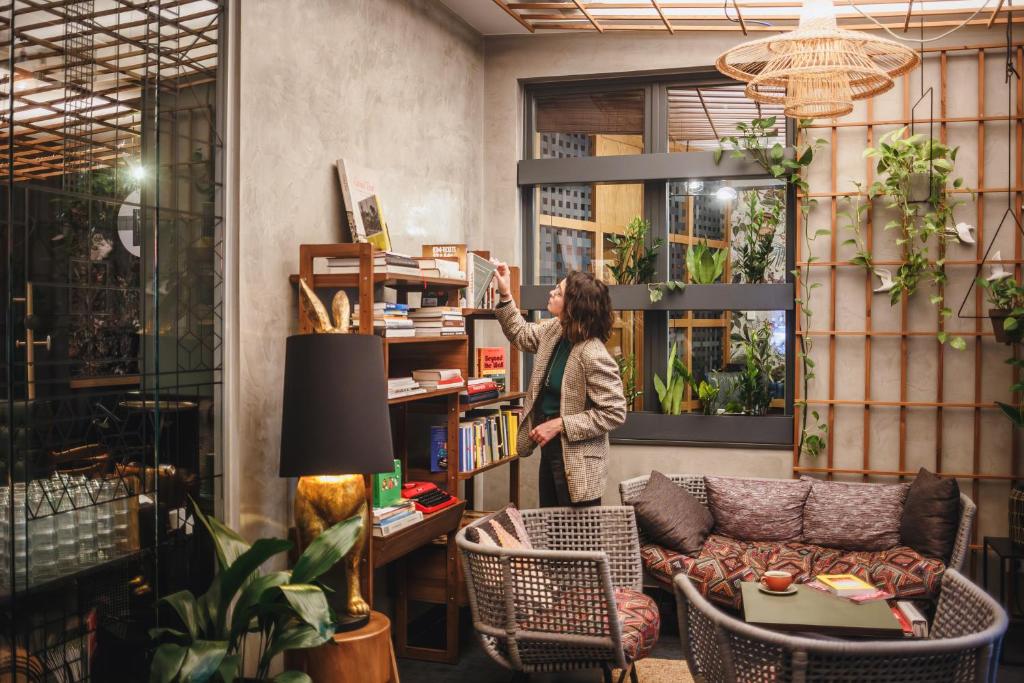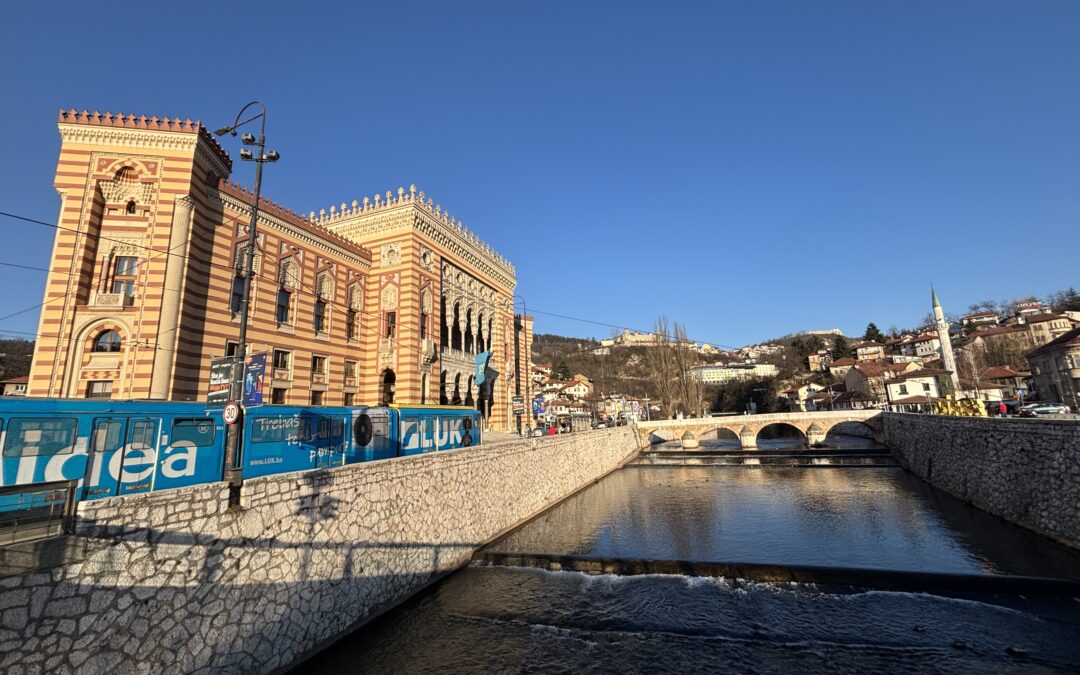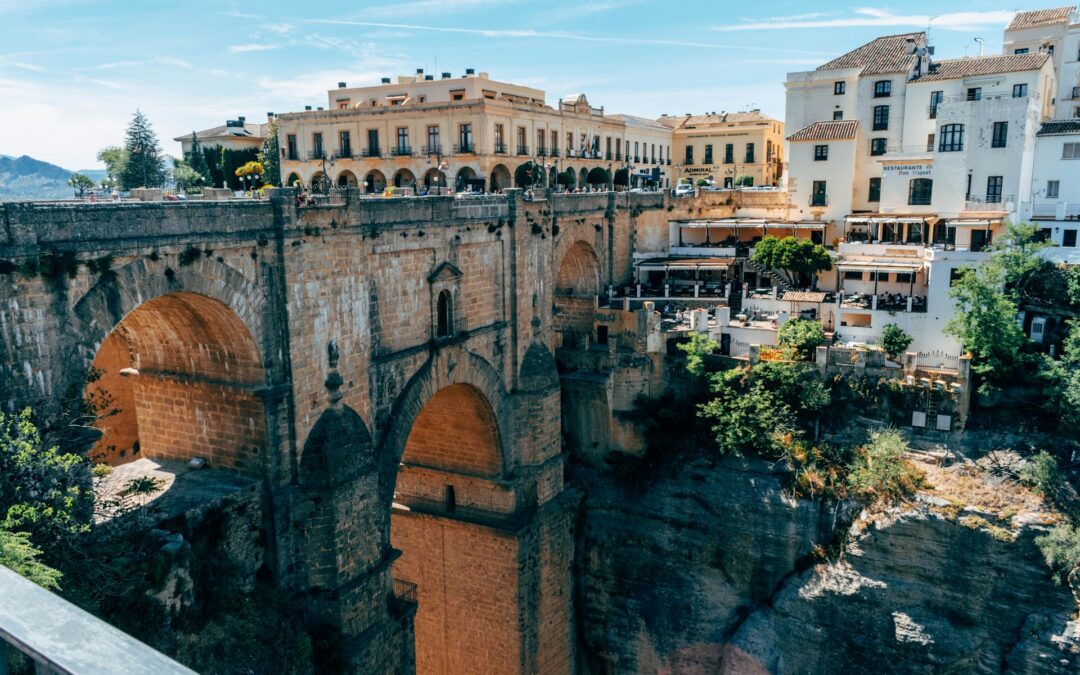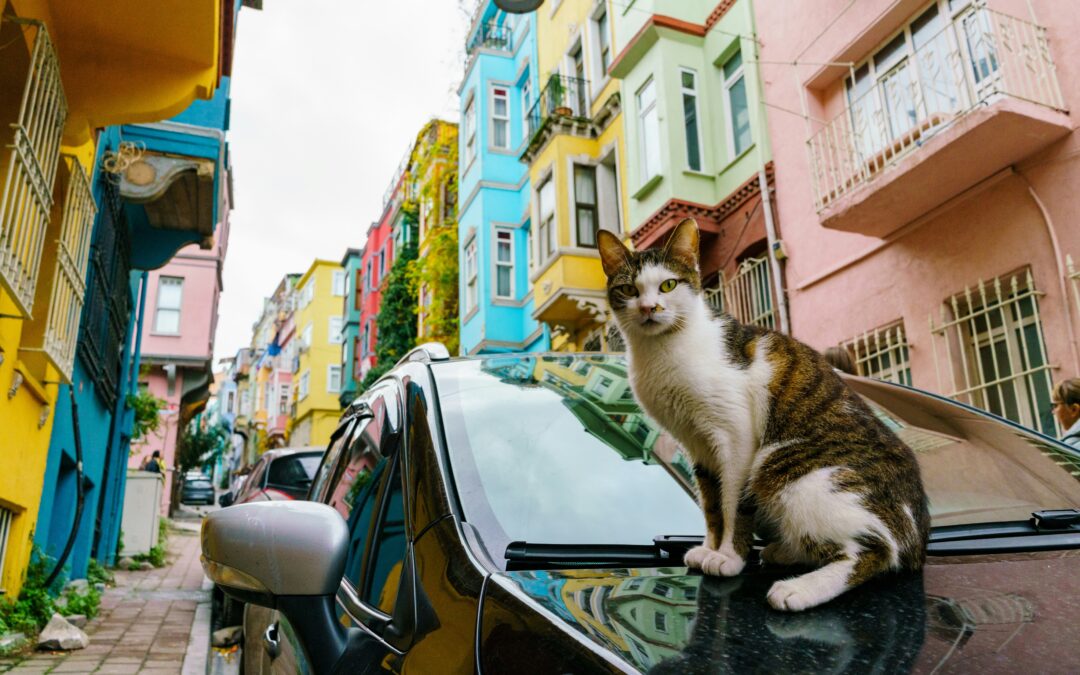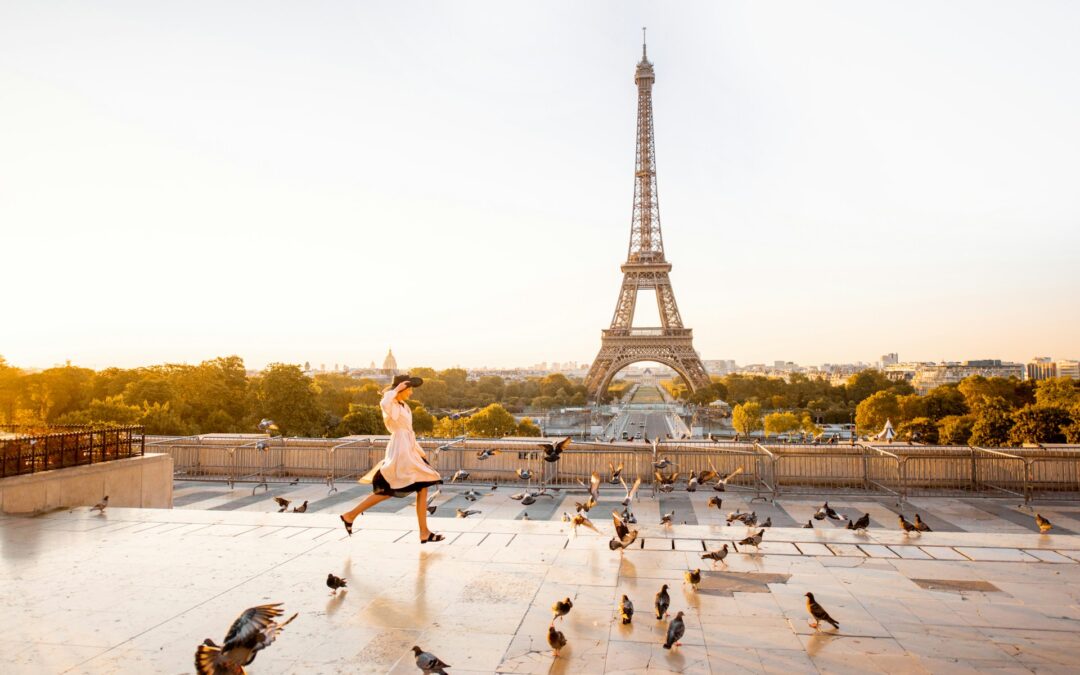Vienna, the capital of Austria, is a city that effortlessly blends imperial grandeur with modern charm. It is a place where history whispers through the baroque facades and echoes in the grand concert halls. As the former center of the Habsburg Empire, Vienna carries an undeniable sense of elegance, offering visitors world-class museums, stunning architecture, and a vibrant café culture. From the majestic Schönbrunn Palace to the legendary Vienna State Opera, the city is filled with cultural treasures. Yet, beyond its historic landmarks, Vienna is a thriving metropolis with a rich culinary scene, trendy neighborhoods, and a deep-rooted appreciation for art and music. Whether you’re strolling along the Ringstrasse, sipping coffee in a historic café, or enjoying a performance by the Vienna Philharmonic, this city will captivate you at every turn.
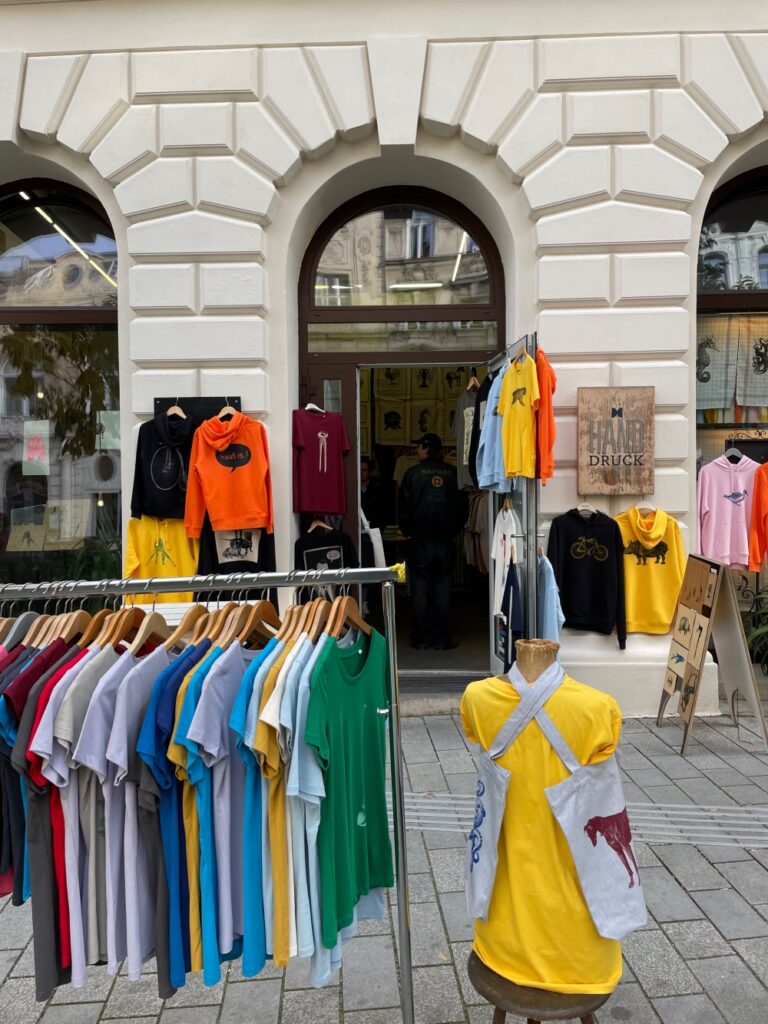

Why visit Vienna?
There are countless reasons to visit Vienna, but what makes it truly special is its ability to transport you through time. Walking through the city’s historic center, you feel as if you’ve stepped into a world of emperors, composers, and visionaries. The city’s palaces, churches, and concert halls speak to its rich history, while its museums house masterpieces from past centuries. Yet, Vienna is not just a city of the past. It is a cultural powerhouse where modern art galleries, contemporary design stores, and vibrant culinary spots thrive. From its world-renowned classical music heritage to its emerging street food culture, Vienna offers a mix of old and new that few cities can match.

Best time to visit Vienna
Vienna is a city that transforms beautifully with each season, making it an excellent destination year-round. Spring brings blooming gardens and mild temperatures, ideal for long walks in the city’s many parks. Summer is filled with outdoor events, from film festivals to open-air concerts, although it can get crowded. Autumn bathes the city in golden hues and marks the beginning of the wine harvest in nearby vineyards. Winter, despite its chilly temperatures, is when Vienna becomes a magical wonderland with its famous Christmas markets, ice-skating rinks, and festive atmosphere. No matter when you visit, Vienna has something to offer, whether it’s the vibrant outdoor life of summer or the cozy charm of its winter cafés.
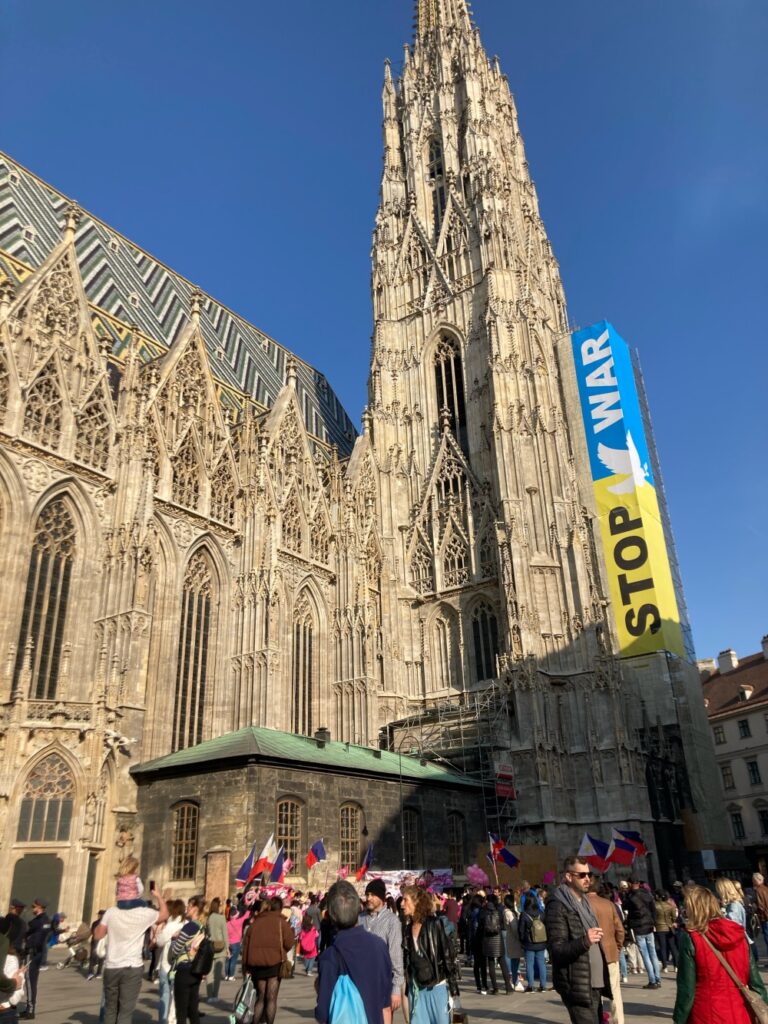


Guide to Vienna transport
Reaching Vienna is effortless, as it is well-connected by air, rail, and road. Vienna International Airport is just a short train ride from the city center, making it an easy arrival point for international visitors. For those traveling from neighboring countries, Vienna’s excellent rail network provides convenient connections to cities like Budapest, Prague, and Munich. Once in Vienna, navigating the city is a breeze. The metro, tram, and bus systems are efficient, clean, and well-integrated, ensuring that you can reach any part of the city without hassle. While taxis and ride-sharing services are available, they are often unnecessary, as Vienna is highly walkable. Many of its most famous sights are within a short distance of each other, making strolling through its streets one of the best ways to experience the city’s charm.
1. U-Bahn (Subway/Metro)
The U-Bahn (short for Untergrundbahn) is the fastest way to travel across Vienna. It consists of five lines (U1–U4, U6) that operate daily from 5:00 AM until midnight, with trains arriving every 3–5 minutes during peak hours. On Fridays, Saturdays, and the nights before public holidays, the U-Bahn runs 24/7, making it perfect for night owls and those attending late concerts or events.
- U1 (Red Line): Connects the north and south of Vienna, passing through the city center (Stephansplatz).
- U2 (Purple Line): Runs near major cultural spots like the MuseumsQuartier and Praterstern.
- U3 (Orange Line): Passes through landmarks like St. Stephen’s Cathedral and Westbahnhof.
- U4 (Green Line): Ideal for tourists, connecting Schönbrunn Palace and the city center.
- U6 (Brown Line): Covers the western parts of the city and connects to suburban areas.
2. Trams (Straßenbahn)
Vienna’s tram network is one of the largest in the world, offering a scenic way to explore the city. Trams operate above ground, making them perfect for sightseeing while traveling. The most popular tram route for tourists is Tram Line 1 and 2, which circle the Ringstrasse, passing by the Hofburg Palace, Vienna State Opera, Parliament, and Rathaus (City Hall).
Newer trams are modern and accessible, while some older red trams retain their nostalgic charm. They run frequently, typically every 5–10 minutes, and provide an excellent way to experience Vienna at a relaxed pace.

3. Buses (Autobusse)
Buses complement the tram and metro system, covering areas that are not served by other modes of transport. While trams and the metro are more commonly used by visitors, buses can be useful for reaching suburban areas, Heuriger wine taverns, and parks. Vienna also operates night buses (NightLine), running from midnight to 5:00 AM, when the U-Bahn is closed on weekdays.
4. S-Bahn (Suburban Railway)
The S-Bahn (Schnellbahn) is Vienna’s regional train system that connects the city with surrounding suburbs and the airport. The most useful S-Bahn line for tourists is S7, which runs between Vienna International Airport (VIE) and the city center, making it a budget-friendly alternative to airport taxis or the CAT airport express.
Tickets & Passes: What You Need to Know
Vienna’s public transport system is integrated, meaning one ticket is valid for the U-Bahn, trams, buses, and S-Bahn within the city zone. Tickets must be purchased before boarding and validated at the machines in metro stations or inside trams and buses.
- Single Ticket (€2.40): Valid for one continuous journey across the city, including transfers.
- 24-Hour Pass (€8.00): Unlimited travel for one day, ideal for short visits.
- 48-Hour Pass (€14.10) & 72-Hour Pass (€17.10): Great for multi-day stays.
- Weekly Ticket (€17.10): Valid from Monday to the following Sunday, offering unlimited travel for a week.
- Vienna City Card (€17 for 24 hours, €25 for 48 hours, €29 for 72 hours): Includes free public transport and discounts on museums, attractions, and restaurants.
- Airport Transfer (S7 Line, €4.40 one-way): A cost-effective way to reach central Vienna.
Tickets are available at vending machines in U-Bahn stations, tabac shops (Trafik), and online via the Wiener Linien website or app.
Vienna operates on an honor system, meaning there are no turnstiles at metro stations. However, ticket inspectors frequently conduct random checks, and getting caught without a valid ticket results in a fine of €105. It’s always best to validate your ticket and avoid any unnecessary hassle.
Public Transport Tips for Visitors
- Use Google Maps or the Wiener Linien App – Both provide real-time schedules, route planning, and updates on any service disruptions.
- Avoid peak hours (7:30-9:00 AM & 5:00-6:30 PM) – The U-Bahn and trams can get crowded during rush hours.
- Trams don’t stop automatically – You need to press the stop button to request a stop when riding a tram.
- Validate paper tickets – If you’re using a single-use paper ticket, make sure to stamp it in the blue machines before entering the U-Bahn or when boarding a tram/bus.
- Bike and e-scooter rentals are available – While public transport is excellent, Citybike Vienna and e-scooter rentals offer alternative ways to explore the city at your own pace.
Guide to Vienna’s Top attractions
Vienna is filled with architectural and cultural marvels, starting with its grand palaces. Schönbrunn Palace, once the summer residence of the Habsburgs, is an essential stop. Its lavishly decorated rooms, expansive gardens, and historical significance make it a highlight of any visit. The Hofburg Palace, located in the heart of the city, is another must-see. This sprawling complex houses the Imperial Apartments, the Sisi Museum, and the Spanish Riding School, where the world-famous Lipizzaner horses perform. The Belvedere Palace, meanwhile, offers not just stunning baroque architecture but also an impressive art collection, including Gustav Klimt’s famous painting The Kiss.
Beyond its imperial heritage, Vienna boasts a thriving art and music scene. The Albertina Museum and the Kunsthistorisches Museum are both filled with masterpieces, while contemporary art lovers will appreciate the cutting-edge exhibitions at the MuseumsQuartier. For music enthusiasts, attending a performance at the Vienna State Opera or the Musikverein is an unforgettable experience. The city’s deep connection to composers like Mozart, Beethoven, and Strauss is still alive today, with concerts and performances held regularly throughout the year.
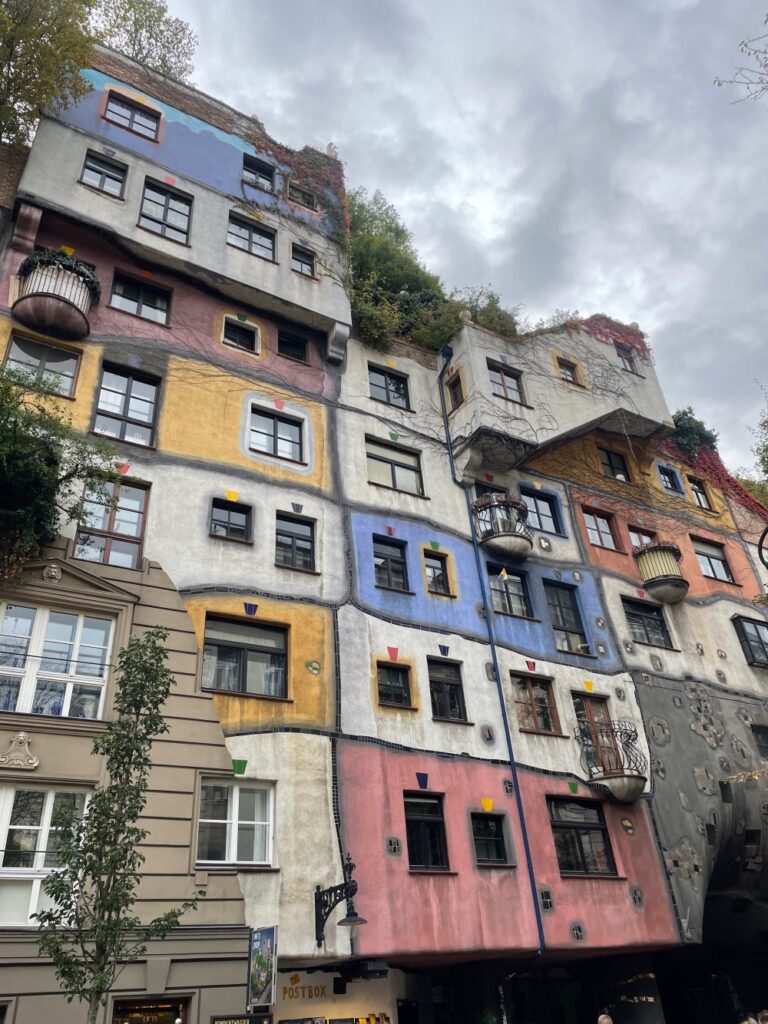


Vienna is not just about grand landmarks and classical music—it also has a playful side. The Prater amusement park, home to the iconic Giant Ferris Wheel, offers a fun break from sightseeing. For those seeking something unique, a visit to the colorful and quirky Hundertwasserhaus provides a contrast to the city’s baroque and gothic architecture. Meanwhile, the bustling Naschmarkt is the perfect place to immerse yourself in local flavors, offering everything from fresh produce to international delicacies.
Historic Palaces & Landmarks
- Schönbrunn Palace – The lavish summer residence of the Habsburgs, featuring stunning gardens and the world’s oldest zoo.
- Hofburg Palace – The imperial winter palace, home to the Sisi Museum, Austrian National Library, and Spanish Riding School.
- Belvedere Palace – A baroque masterpiece housing Klimt’s The Kiss and breathtaking gardens.
- St. Stephen’s Cathedral – Vienna’s iconic Gothic cathedral with panoramic views from its tower.
- Karlskirche (St. Charles Church) – A magnificent baroque church with a striking dome and stunning frescoes.
- Rathaus (Vienna City Hall) – A neo-Gothic architectural marvel, known for its Christmas markets and summer film festivals.
- Austrian Parliament Building – A grand structure inspired by ancient Greek architecture, housing Austria’s government.


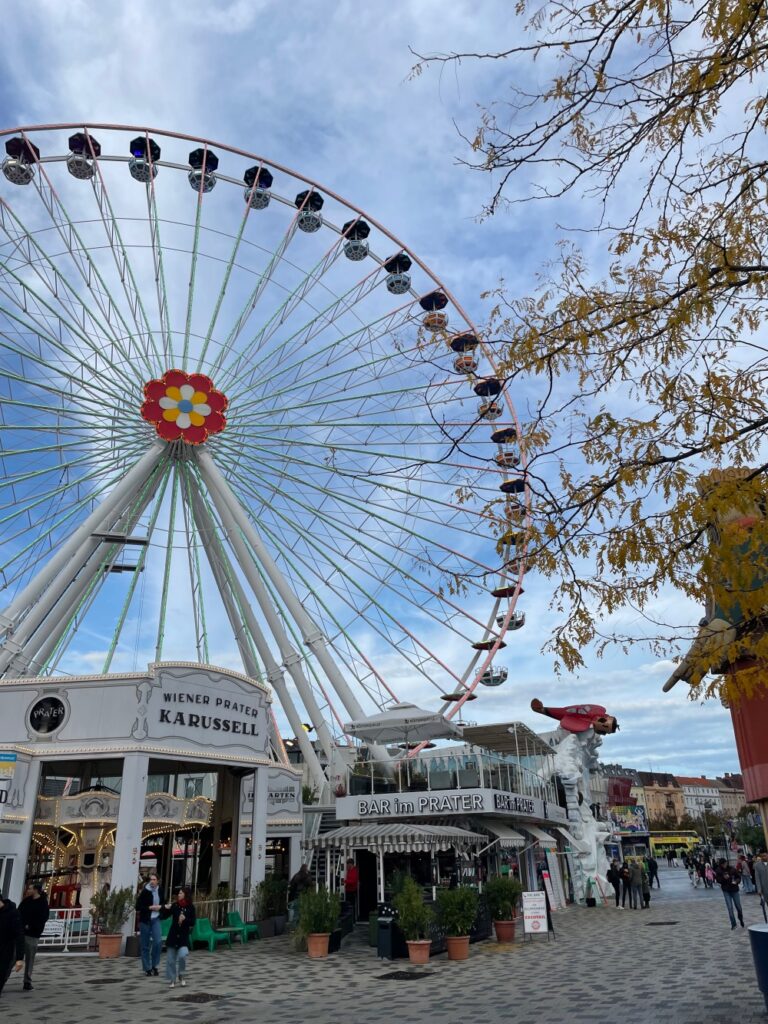
Museums & Cultural Attractions
- Kunsthistorisches Museum – One of the world’s greatest fine art museums, featuring works by Rembrandt, Vermeer, and Rubens.
- Albertina Museum – A must-visit for art lovers, showcasing Monet, Picasso, and contemporary exhibitions.
- MuseumsQuartier – A vibrant cultural district housing the Leopold Museum, MUMOK, and contemporary art galleries.
- Sigmund Freud Museum – The former home of the father of psychoanalysis, offering a deep dive into his life and work.
- Haus der Musik – An interactive museum dedicated to music and famous Viennese composers.
- Natural History Museum – Famous for its impressive dinosaur skeletons and massive meteorite collection.

Music & Performing Arts Venues
- Vienna State Opera – One of the world’s premier opera houses, offering nightly performances.
- Musikverein – Home of the Vienna Philharmonic, known for its exceptional acoustics and the annual New Year’s Concert.
- Volksoper Vienna – Specializing in operettas, musicals, and classical productions.
- Spanish Riding School – Famous for its Lipizzaner horse performances and elegant dressage shows.
Parks, Gardens & Outdoor Attractions
- Prater Park & Giant Ferris Wheel – A historic amusement park with the famous Riesenrad (Giant Ferris Wheel).
- Volksgarten – A picturesque park filled with thousands of roses.
- Burggarten & Mozart Statue – A serene park near Hofburg Palace with a monument dedicated to Mozart.
- Stadtpark – A beautiful city park featuring the golden Johann Strauss statue.
- Vienna Woods (Wienerwald) – A scenic escape offering hiking trails, vineyards, and panoramic city views.
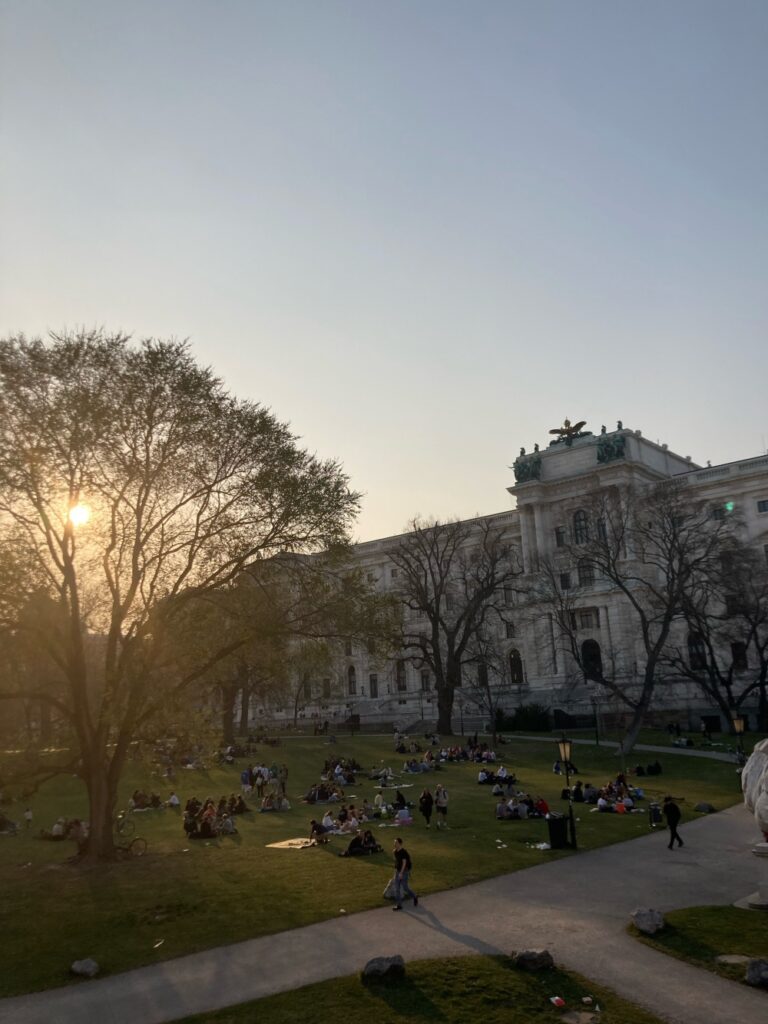
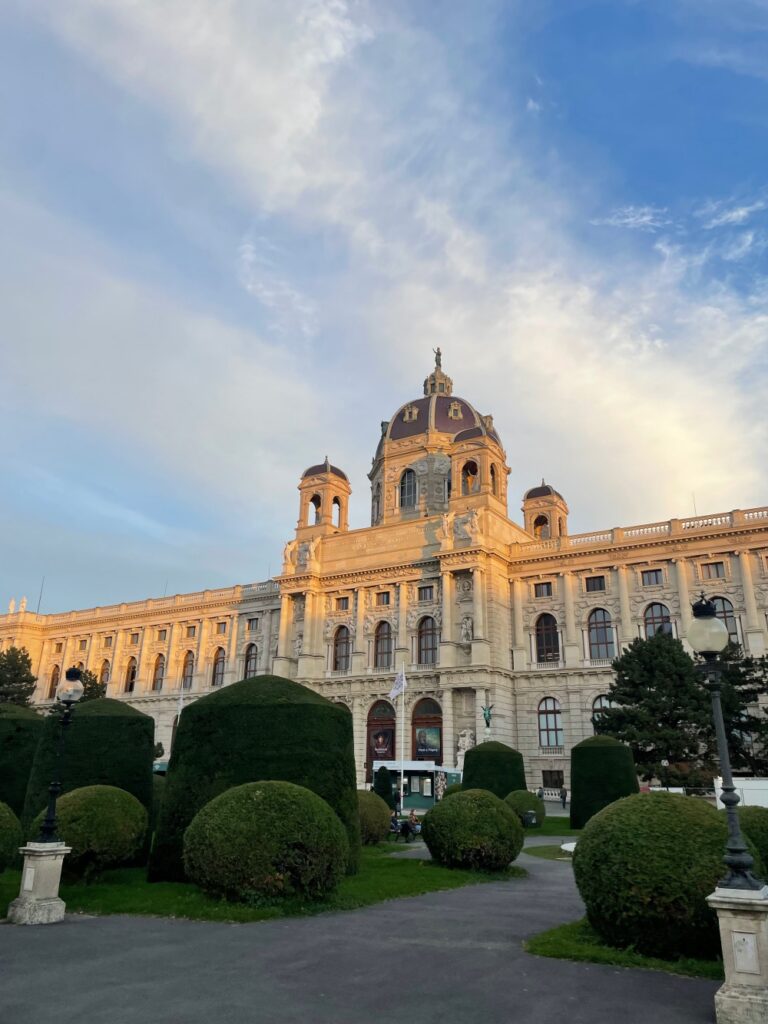
Unique & Hidden Gems
- Hundertwasserhaus – A quirky, colorful apartment building designed by artist Friedensreich Hundertwasser.
- Naschmarkt – Vienna’s largest outdoor market, featuring a mix of Austrian and international food.
- Danube Tower (Donauturm) – The tallest structure in Austria, offering breathtaking views of the city.
- Central Cemetery (Zentralfriedhof) – The final resting place of Beethoven, Schubert, Brahms, and Falco.
- Augarten – A peaceful baroque park with Vienna’s oldest porcelain factory and WWII Flak towers.
- Gasometer – Four converted gas tanks transformed into a shopping, entertainment, and residential complex.
Guide to Vienna: What to eat and where?
Vienna’s culinary scene is as rich as its cultural heritage. The city is famous for its coffeehouse culture, which has been an essential part of Viennese life for centuries. Stepping into a traditional café, such as Café Central or Café Sperl, feels like entering a different era, where time slows down and the aroma of freshly brewed coffee fills the air. For a more intimate and slightly bohemian experience, Café Jelinek is another excellent choice, known for its cozy atmosphere and homemade Apfelstrudel. Here, you can enjoy classic Viennese pastries like Sachertorte, a dense chocolate cake with a layer of apricot jam, or Apfelstrudel, a delicious apple-filled pastry, both of which are staples of Vienna’s legendary café culture.
For something heartier, Vienna’s traditional dishes do not disappoint. Wiener Schnitzel, a golden-brown, crispy veal cutlet, is perhaps the most famous dish, best enjoyed at a classic Gasthaus. A great place to try an authentic Schnitzel without the tourist rush is Gasthaus Pöschl, where the quality and flavors are exceptional. Another iconic restaurant for this dish is Figlmüller Bäckerstraße, known for serving giant Schnitzels that overflow the plate. If you’re looking for a heartwarming dish, Tafelspitz, a slow-cooked beef dish served with horseradish and apple sauce, is a must-try, with Gasthaus Rebhuhn offering an excellent and affordable version.

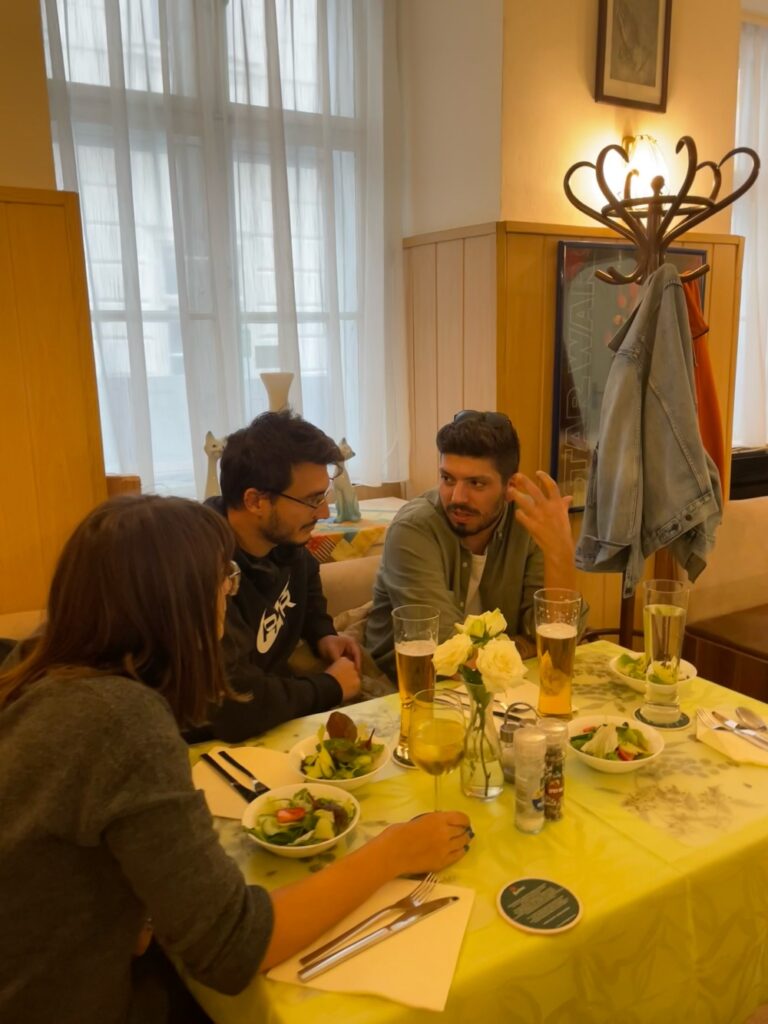
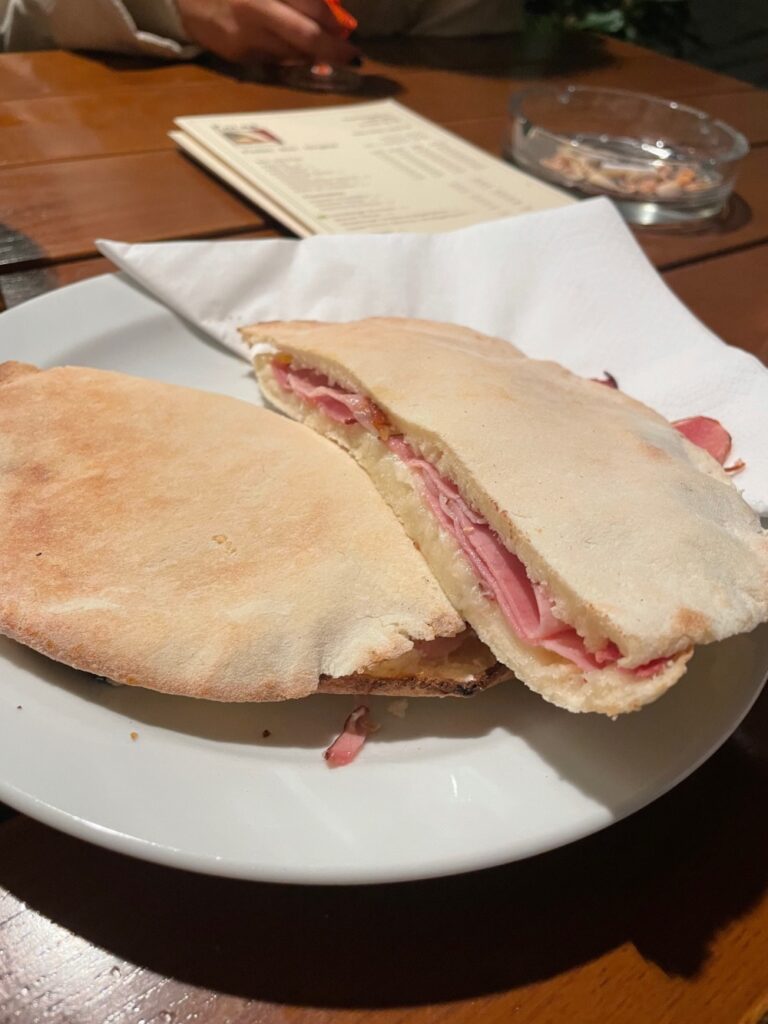
For those who love Viennese street food, a visit to Bitzinger Würstelstand near the Albertina Museum is essential. Their Käsekrainer, a cheese-filled sausage, is a beloved local favorite, best paired with mustard and fresh bread. If you want a quick but authentic snack, Trzesniewski is the go-to place for open-faced sandwiches, offering a variety of toppings that pair perfectly with a tiny beer (Pfiff).
Vienna is also a paradise for wine lovers, thanks to its famous Heuriger taverns, where you can enjoy local white wine and traditional Austrian dishes in a charming vineyard setting. Some of the best Heuriger experiences can be found in Grinzing or Neustift am Walde, where locals gather to enjoy fresh, unfiltered wine straight from the barrel.
From historic cafés and hearty Gasthauses to street food gems and local wine taverns, Vienna offers a diverse and delicious food scene that reflects its rich history and warm hospitality.
Where to stay in Vienna
Choosing the right neighborhood can enhance your experience in Vienna. The Innere Stadt, or the 1st District, is the historic heart of the city and the best area for first-time visitors who want to be close to major attractions. Leopoldstadt, across the Danube Canal, offers a quieter atmosphere while still being within walking distance of the city center. For a more artistic and trendy vibe, Neubau and Mariahilf, located around the MuseumsQuartier, provide a mix of boutique hotels, independent shops, and creative spaces.
BOOK YOUR HOTEL IN VIENNA HERE
Final Tips for visiting Vienna
Vienna is a city that rewards those who take their time to explore. While major attractions are a must-see, some of the best experiences come from simply wandering its streets, discovering hidden courtyards, and taking in the details of everyday life. The city is incredibly safe, making it easy to explore at any hour. English is widely spoken, but a few German phrases can go a long way in making connections with locals. Public transport is efficient, but don’t be afraid to walk—it’s the best way to truly soak in the beauty of Vienna.
With its imperial elegance, rich cultural heritage, and vibrant atmosphere, Vienna is a city that leaves a lasting impression. Whether you’re visiting for a weekend or a longer stay, it promises an experience that is as refined as it is unforgettable.




